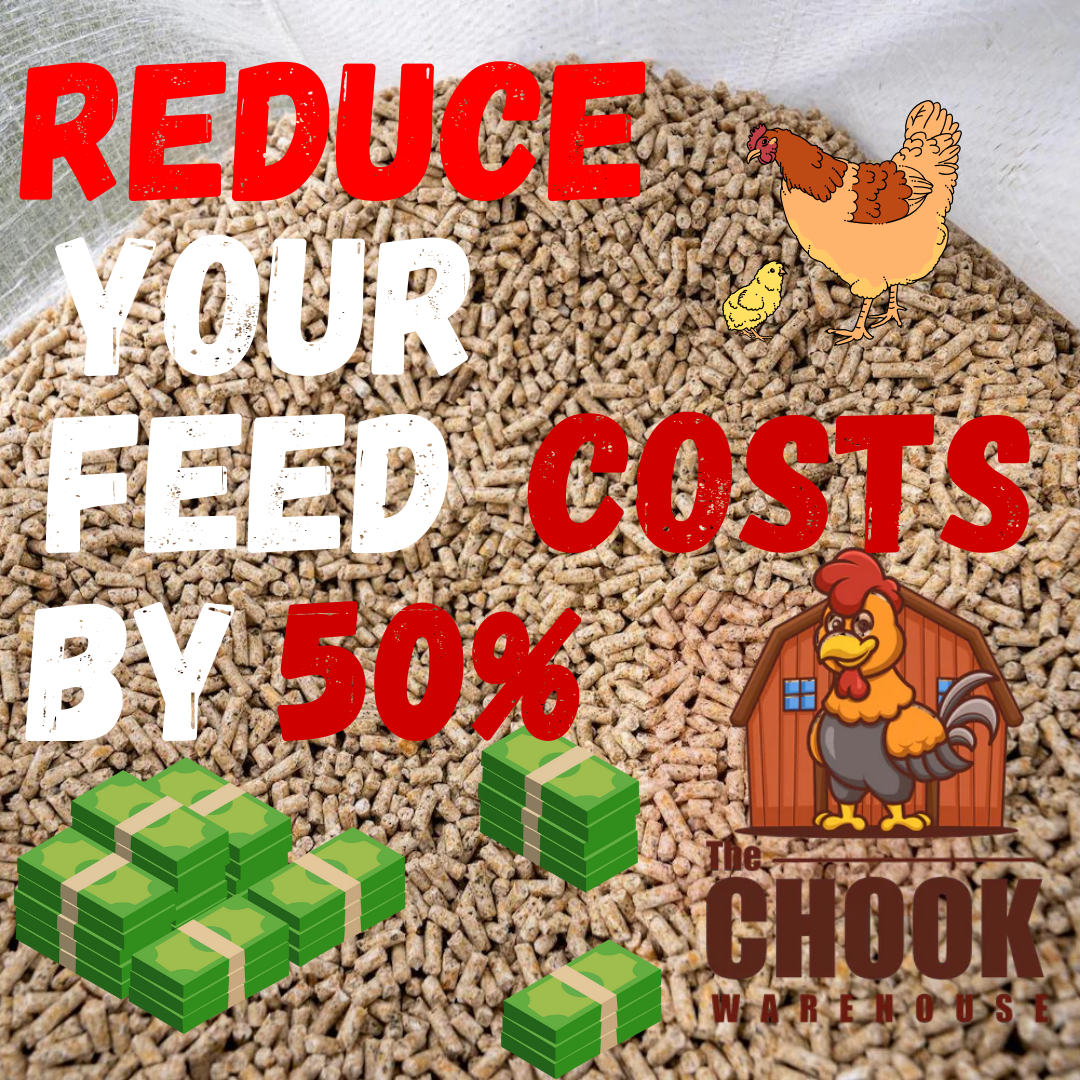
How To Cut Your Feed Bill In Half
Share
For poultry keepers the biggest expense is feed, and with feed prices on a constant rise many poultry keepers have been forced to downsize their flocks due to cost. A true kick in the guts for poultry keepers.
Over the past few years i have experimented with all different ways of feeding my birds. I have collected these into a list from least expensive and easiest to most effective ways i have reduced my feed bill.
1. Kitchen scraps,
Possibly the easiest way to reduce the feed bill, i use a 10 liter bucket from Mitre 10 which collects kitchen scraps and can be emptied everyday providing birds with a diverse array of foods. Plus the birds love it.
2. Bakery scraps,
This is another great way to feed your birds, my local bakery provides 20kg flour bags filled with all the goods that didn't sell which can be purchased for $5 a bag. The bags mainly contained bread and pastries but from memory they may have also contain some veggie waste too.
3. Bulk purchasing of feed.
This is one of the key ways that kept costs down when i had a large number of birds for egg production. I remember when i first raised my flock numbers, i couldn't believe how much feed i was going through so buying at retail prices just wasn't practical. It was then when i called up my local grain mill and ordered a 500kg bulka bag, buying in this size meant the price per kg of feed reduced from $1.20 per kg to $0.70 per kg saving $250 for the same amount of feed.
While you may not like the idea of such a large purchase, you may be able to create an arrangement with your local poultry club to purchase in bulk together. For instance 2,000kg @ $0.50-$0.60/kg split among 5-10 members and then take your share of the feed. This can further reduce your costs as it allows you to purchase more feed for less and it benefits all involved.
4. Pasture raise your birds,
Many poultry experts call for regular greens. This can be achieved by allowing birds to graze pastures. Rotational grazing allows the birds to eat greens and insects, leaving less room for our very expensive pellets or mash in their stomachs. But don't worry about nutrien, your birds will probably benefit more from the organic greens in their pasture than from processed vitamins and minerals in their feed.
When i say 'pasture grazing' and 'rotational' your probably thinking of moveable coops and electric nets. However, all this can be done with a stationary coop and permanent fences. This is done by building a large perimeter and then splitting the yard into at least 5 sections. one that surrounds the coop connecting all of the other sections, the birds will always have access to this section. Then the rest of the yard is split in 4 sections, one sacrifice paddock for when grass growth stops in the others, and then 3 pasture paddocks rotated on a frequency which depends on grass growth ensuring the grass has time to recover in between. more pasture sections can be added if grass growth is slow most of the year.
5. upgrade your feeders!
The amount of feed that has ended up on the floor of my coops, taken by rats, mice or otherwise is unbelievable. The cost of this feed is probably in the thousands of dollars and counting! All because i didn't upgrade my feeders.
We are now lucky enough to have access to feeders that keep out rodents, rain and spillage but very few people use them, instead opting for an old dish or simply dumping some pellets on the ground.
Lets break down exactly how much feed we're losing.
Lets assume that i have a reasonably small flock of around 10 birds.
each requiring about 150grams of feed a day or 1.5kg in total.
If we lose just 10% to spillage, 5% to rodents and another 5% to wild birds we have an overall feed loss of 20% or 300grams a day, while this doesnt sound like much over a full year it adds up to 19.5kg of feed or $23.40 and thats just for 10 birds. i know some people reading this will have 100s of birds which is where the difference starts to hit a bit harder.
Alternatively, if we eliminated this waste we could keep another 2 chickens for the same amount of money in feed. Or if you had 100 chickens you could keep another 20 birds if you eliminated food waste.
However feeders can be expensive. Some costing upwards of $200 a pop! but lets break down this cost. If you had 100 birds and a 20% feed loss rate. at $1.2 a kg you are losing $3.60 a day in feed. Or $1,314 a year. Suddenly that $200 feeder is cheap. Keep in mind these feeders will last more than one year, some will last 5 or more years from personal experience.
So if you are interested in updating your feeder now there are plenty of great brands out there. But if this article has been helpful for you i'd really appreciate it if you could take a peak at some of the feeders i have to offer here on chookwarehouse. Heres a link. HERE
Finally, implementing all of these methods will reduce your feed costs guaranteed. If you have any questions or suggestions please leave a comment down below.
Cheers,
Jarvis.
